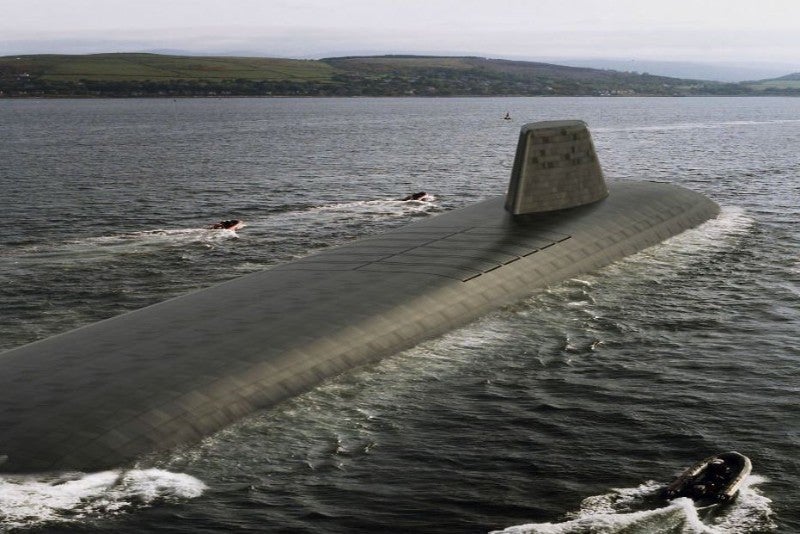
Dreadnought vs. Columbia: A Clash of the Titans
Within the past decade or so, the UK and the US have been developing separate future submarines for their respective naval fleets. Both the Dreadnought and the Columbia classes are expected to enter service by the 2030s, but each programme has come under criticism to varying extents.
What unique capabilities might the different classes of future submarines have and what progress has been made in their development?

Discover B2B Marketing That Performs
Combine business intelligence and editorial excellence to reach engaged professionals across 36 leading media platforms.
Royal Navy’s Dreadnought class

Named after the former battleship, the development of the Royal Navy’s Dreadnought class of future submarines kicked off in 2011, when the UK Government signed the initial assessment phase for procuring materials for the first vessel.
On 18 July 2016, the House of Commons voted to renew the UK nuclear deterrent programme Trident, and subsequently committed to the Dreadnought programme, which at the time was known as the Successor class.
The UK plans to build four Dreadnought-class submarines at a total lifetime cost of £31bn, according to the MOD, although it has set aside a contingency sum of £10bn.

US Tariffs are shifting - will you react or anticipate?
Don’t let policy changes catch you off guard. Stay proactive with real-time data and expert analysis.
By GlobalDataThe new Dreadnought class, built by BAE Systems, is expected to replace the existing Vanguard class within the Royal Navy. It will be larger than the previous class, with a length of around 153.6m and a total displacement of 17,200t. It will use the Rolls-Royce PWR3 nuclear reactor, a US design that is said to be simpler and safer than the PWR2 nuclear reactor on the Vanguard class, while also having a longer lifespan and lower maintenance requirements.
The Dreadnought class’s armament includes four 21in torpedo tubes to fire BAE’s Spearfish heavyweight torpedoes, and 12 ballistic missile tubes that act as the nuclear deterrent and fire up to 12 Lockheed Trident II D-5 submarine-launched ballistic missiles (SLBMs), each carrying eight warheads.
The high initial cost projects of the programme has come under scrutiny from various anti-nuclear groups such as the Nuclear Information Service (as reported by the Telegraph) and The Campaign for Nuclear Disarmament, who have said that the true lifetime cost of the future submarines could be as high as £170bn and £205bn respectively.
US Navy’s Columbia class

Similar to the Dreadnought class, the Columbia class was announced in 2014 to replace the US Navy’s Ohio-class ballistic submarines. In a 300 page document, US Congress set out the specifications for the new Columbia class under the Ohio Replacement programme.
According to the Ohio Replacement project document, it will be similar in size to the Ohio class but will be heavier at a displacement of 21,144t compared to the Ohio’s displacement of 19,041t.
One of the key features of the Columbia class is its electric drive propulsion system, which is different to the mechanical drive system used by other navies. Above all, electric drive is expected to be quieter and save running costs. However, the Federation of American Scientists (FAS) reported in 2019 that the US Navy has experienced problems with its electric drive system, which required extensive repair and led to a nine-month delay.
Twelve future submarines of the Columbia class are planned for construction with the first beginning in 2021. General Dynamics Electric Boat won the contract to build the new submarines in 2016, and will receive help and expertise from Huntington Ingalls Industries’ (HII) Newport News Shipbuilding.
In May 2019, HII announced it had cut the first steel plate for the maiden vessel.
The $128bn programme received criticism in 2013 from the FAS, which questioned the need to build 12 new submarines despite a decline in the number of deterrent patrols conducted in the US. The organisation argued that fewer submarines could effectively do the same job.
What’s more, the US Government Accountability Office has called the cost estimate of the programme ‘overly optimistic’ and said it could likely lead to budget increases. The programme will also be subject to an audit from the Department of Defense Inspector General later this year, according to Bloomberg.
Like the Dreadnought class, the Columbia class will be armed with 16 Trident II D-5 ballistic missiles. The US Navy said that the two classes will share a common missile compartment design for interoperability.



